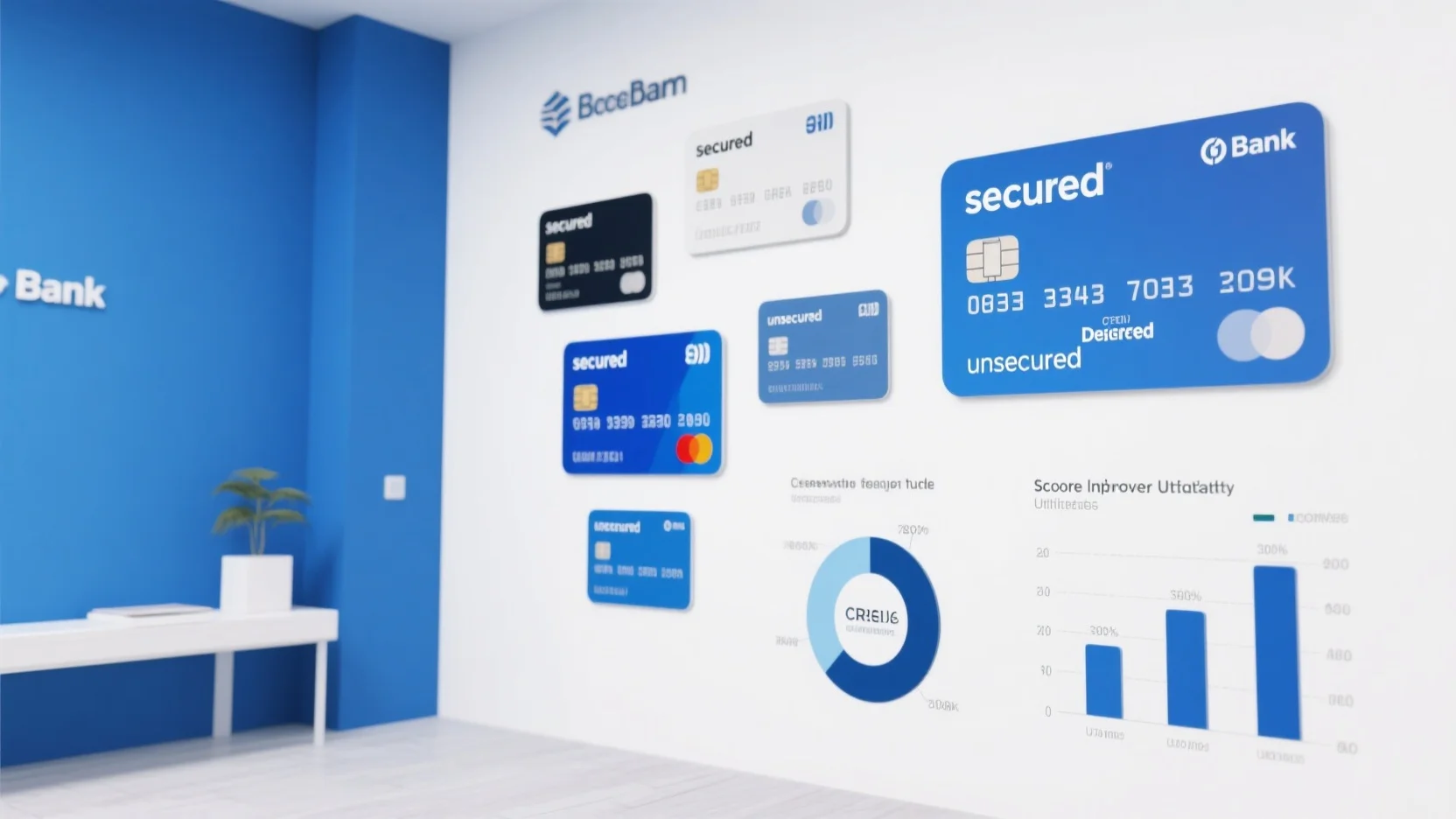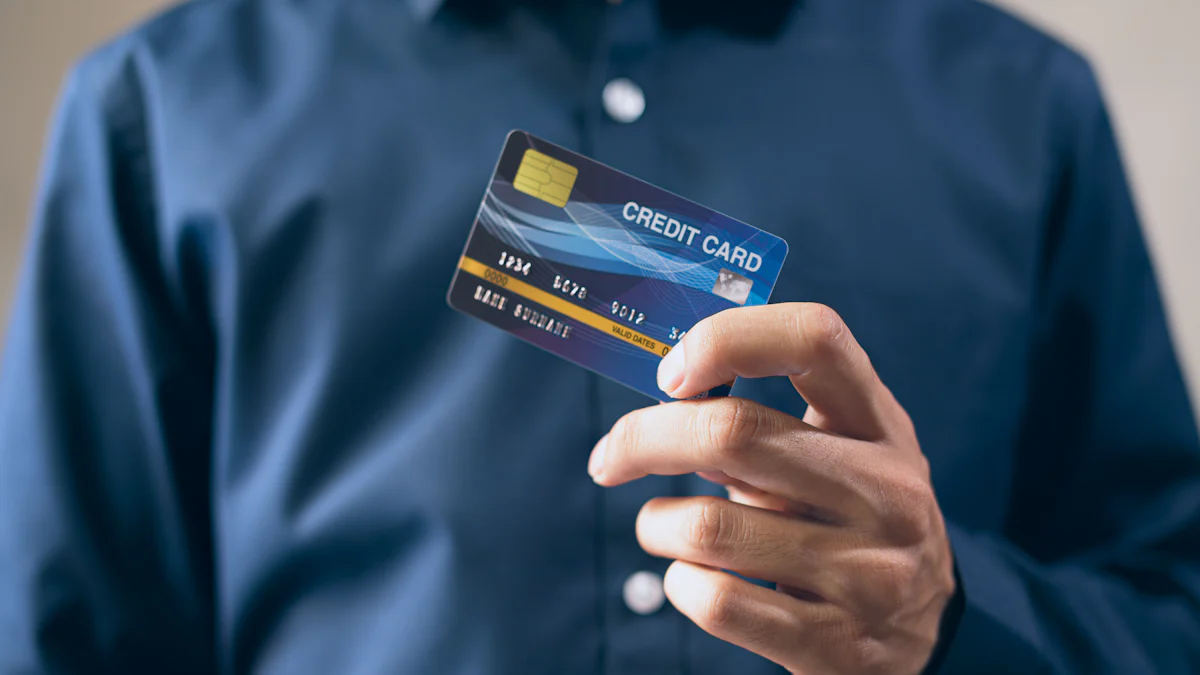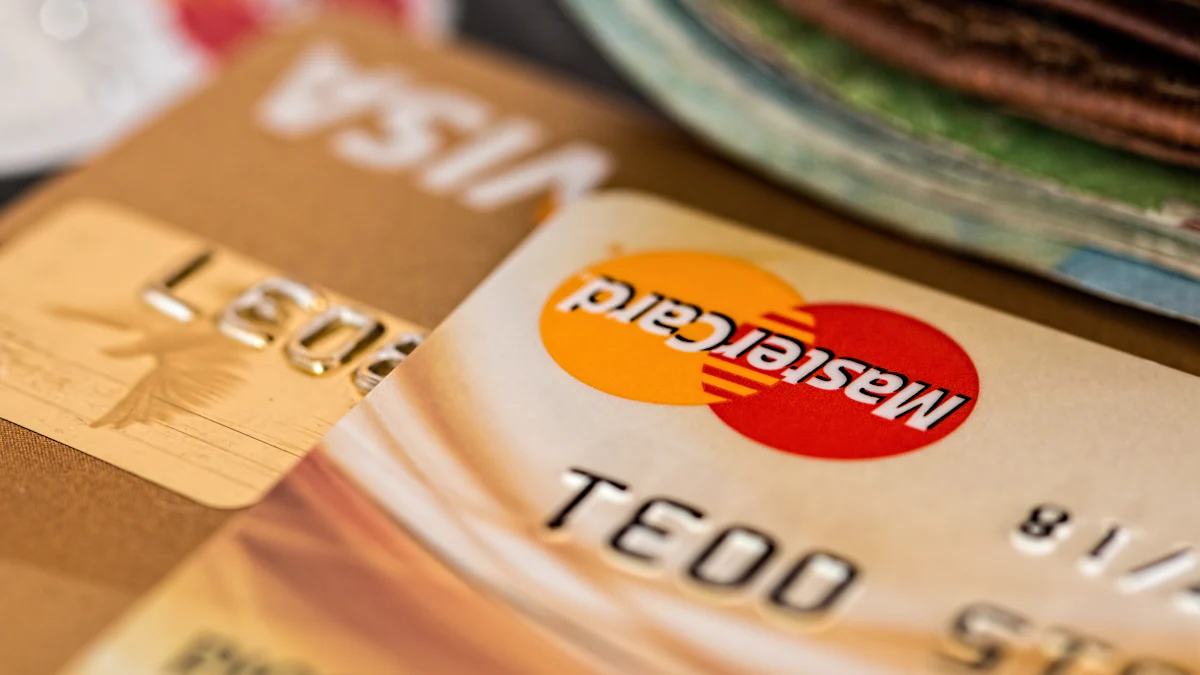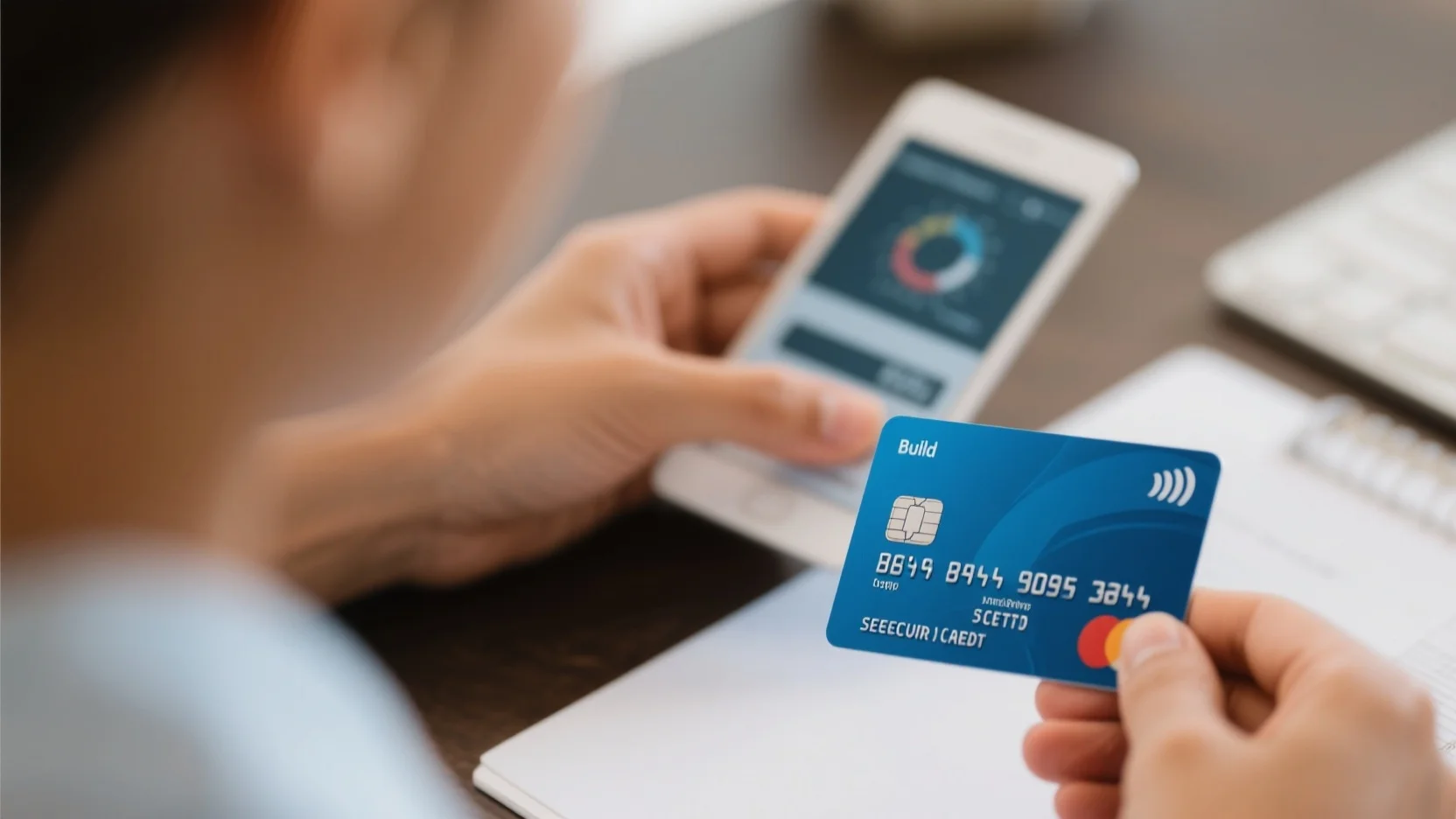
A Beginner’s Guide to Applying for Secured Credit Cards

Image Source: pexels
A secured credit card is one of the best secured credit cards to build credit. You need to pay a cash deposit to use it, and this deposit determines your credit limit while lowering the risk for banks. These cards are ideal for beginners with low credit scores, as they typically don’t require credit checks and report to credit bureaus. This process helps improve your credit history.
Key Takeaways
- Secured credit cards need a cash deposit as your limit. This deposit keeps the bank safe and helps you grow credit.
- Always pay on time and use little of your limit. Try to use less than 30% of your credit limit.
- Check out different secured cards before you apply. Pick cards that report to all three credit bureaus and check fees and deposits.
What Is a Secured Credit Card?
How It Works
A secured credit card helps people build or fix credit. Unlike regular credit cards, it needs a cash deposit first. This deposit is like a safety net and sets your credit limit. For example, if you pay $300, your limit is $300. You can use the card for shopping and must pay the bill monthly.
Paying on time is very important to raise your credit score. Most secured cards share your payment history with big credit bureaus. This helps you create a good credit record. If you use the card wisely, you might qualify for a regular credit card later. Some companies even let you switch to an unsecured card without closing your account.
Secured cards often have fees and interest rates like regular cards. But they help you control spending and learn good money habits. Many top secured cards also return your deposit when you close the account with no balance left.
Why It Requires a Security Deposit
The deposit is a key part of secured credit cards. It protects the card company by acting as a backup. If you don’t pay your bill, they use the deposit to cover it. This makes these cards available to people with little or no credit history.
In the U.S., most secured cards need at least $200 as a deposit. Some cards ask for less, while others allow up to $5,000. The amount depends on your money situation and the card’s rules. When you close the account and pay off everything, you get your deposit back.
This system makes secured cards a great way to rebuild credit. Picking a good secured card can help you start improving your finances. It’s a smart first step toward long-term money success.
Secured vs. Unsecured Credit Cards
Key Differences
Secured and unsecured credit cards are used for different reasons. The biggest difference is how the credit limit is set.
- A secured card needs a refundable deposit. This deposit becomes your credit limit. For example, if you pay $500, your limit is $500.
- Unsecured cards don’t need a deposit. Instead, the credit limit depends on your credit score. People with good credit often get higher limits.
Getting approved is also different. Secured cards are easier to get. Even people with no credit or bad credit can apply. The deposit lowers the risk for the bank. Unsecured cards are harder to qualify for. You need a good credit score and a strong financial history.
Other differences include fees, rewards, and interest rates. Secured cards usually have fewer rewards and higher interest rates. Unsecured cards often have better rewards and lower interest rates. But some unsecured cards may charge higher fees.
| Feature | Secured Credit Cards | Unsecured Credit Cards |
|---|---|---|
| Approval Odds | Easier to get approved for | Harder to get approved for |
| Credit Limit | Based on deposit amount | Usually higher limits |
| Interest Rates | Often higher APRs | Usually lower interest rates |
| Fees | Often lower for bad credit | May have higher fees |
| Rewards | Rarely offered | Better rewards programs |
| Deposit | Required, refundable | Not required |
Which One Is Right for You?
Choosing between these cards depends on your credit and goals.
A secured card is great for beginners or those fixing credit. It’s easier to get and helps build a good credit history. The deposit is refundable, and monthly reports go to credit bureaus.
Unsecured cards are better for people with good credit. They offer higher limits, better rewards, and lower interest rates. But you need a strong credit score and good money habits.
If unsure, start with a secured card. Use it wisely and pay on time. Over time, you can switch to an unsecured card and enjoy more benefits.
Tip: Check your credit score and needs before choosing. A secured card helps you start, while an unsecured card rewards good credit.
How to Apply for a Secured Credit Card
Find the Best Secured Credit Card
Picking the right secured card is very important. Not all cards are the same, so research carefully. Think about these key points:
- Make sure the card reports to all three credit bureaus. This helps you build a good credit history.
- Compare fees and interest rates. Some cards charge yearly fees or high APRs.
- Check deposit options. Some cards need $200, while others allow more.
Choosing the best card for your needs helps you succeed. A card that fits your budget and goals makes things easier.
Save for Your Deposit
Secured cards need a refundable deposit as a backup. Before applying, save enough money for this deposit. Most cards ask for at least $200, but some need more.
Saving for the deposit shows you’re responsible with money. It also sets your credit limit. A bigger deposit means more spending power. For example, a $500 deposit gives you a $500 limit.
Tip: Don’t use emergency savings for the deposit. Save extra money just for this purpose to avoid stress.
Apply for the Card
Getting a secured card is simple if you follow these steps:
- Check your credit report to see where you stand.
- Research and compare cards for fees, APRs, and deposits.
- Gather documents like ID and proof of income.
- Apply online or in person.
- Pay your deposit quickly to start using the card.
Once approved, use the card wisely to improve credit. Pay on time and keep balances low to qualify for better cards later.
Benefits of Secured Credit Cards

Image Source: pexels
Credit Building
Secured credit cards help people build or fix credit. They share payment details with credit bureaus to create a good record. Paying on time and keeping balances low improves credit scores. These cards teach smart habits like spending wisely and paying bills regularly. For beginners, they are a great way to start managing money well.
Secured cards can also lead to unsecured cards later. If you use the card responsibly, you might qualify for an upgrade. Keeping the account open longer helps your credit score by increasing credit age. For those new to credit, secured cards are one of the best tools to improve credit.
Controlled Spending
Secured credit cards help control spending, which is great for beginners. The credit limit equals the deposit, so overspending is less likely. This feature helps users stick to their budget and avoid debt.
Keeping balances low, under 30% of the limit, is important. This improves credit scores and teaches good money management. For people learning to handle money, secured cards are a safe way to practice discipline.
Easier Approval for Beginners
Secured credit cards are easier to get than unsecured ones. The deposit lowers risk for banks, so approval is simpler for people with no credit or bad credit. This makes it easier for beginners to start building credit.
The deposit is refundable when you close the account and pay off the balance. This gives peace of mind to users. For many, secured cards are the first step toward financial freedom and stability.
Drawbacks of Secured Credit Cards
Security Deposit Requirements
Secured credit cards need a refundable deposit to open. Most cards ask for at least $200 or $300. Some may require more, depending on the card company. This deposit sets your credit limit , so less money means less spending power. For example, a $500 deposit gives you a $500 limit.
Even though the deposit is refundable, it locks up money. This money could be used for other important needs. For people struggling to save, this can feel hard. But for those serious about fixing their credit, the deposit is worth it. It’s a step toward better financial options.
Note: Save extra money just for the deposit. Don’t use emergency funds to avoid stress.
Fees and Interest Rates
Secured credit cards often have higher fees and interest rates. Many cards charge yearly fees, usually between $25 and $50. Other fees might include late payment, cash advance, or foreign transaction charges. Some cards even add monthly maintenance or activation fees.
Interest rates are also higher, with an average APR of 24.74% as of September 2024. Carrying a balance can get expensive. Paying off the full balance every month avoids these high costs. This keeps your spending under control.
Tip: Look for cards with lower fees and better interest rates before applying.
Limited Rewards
Secured credit cards rarely offer rewards like cashback or travel perks. Some cards do have rewards, but they are smaller than unsecured cards. Unsecured cards often give better benefits, like higher cashback, travel points, or sign-up bonuses.
This lack of rewards can feel disappointing. But the main purpose of a secured card is to build credit. Once your credit improves, you can switch to an unsecured card with better perks.
Inspiration: Think of a secured card as a starting point. It helps you build credit now for bigger rewards later.
Tips for Using a Secured Credit Card Effectively
Pay Your Balance on Time
Always pay your balance on time to build credit. This shows lenders you are responsible with money. Late payments hurt your credit score and add fees. To avoid this, set reminders or use auto-pay options. These tools help you never miss a payment.
Paying the full balance each month avoids interest charges. This keeps costs low and helps you stick to your budget. If you can’t pay in full, at least pay the minimum amount. Paying on time regularly builds trust with lenders and improves your credit.
Tip: Use your secured credit card like a debit card. Spend only what you can pay off monthly.
Keep Credit Utilization Low
Credit utilization means how much of your limit you use. Keeping this low helps improve your credit score. Experts say to stay under 30% of your limit. For example, if your limit is $500, spend less than $150.
For better results, aim for under 10% usage. Many people see big credit score boosts by staying between 1-3%. This shows lenders you manage credit well and don’t overspend.
Pro Tip: Pay your balance multiple times a month. This keeps your utilization low, even with frequent card use.
Monitor Your Credit Score
Check your credit score often to track your progress. Many secured cards offer free tools to monitor your score. Use these to see how you’re improving and find areas to fix.
Watching your score rise can be encouraging. It shows your efforts are working. If your score drops suddenly, check your credit report for mistakes or missed payments. Fixing errors quickly stops long-term harm to your credit.
Inspiration: Think of your credit score as a grade for your money habits. Every good choice gets you closer to your goals.
Transitioning to an Unsecured Credit Card
When to Upgrade
Knowing when to switch from a secured to an unsecured credit card is important. Look for these signs to know you’re ready:
- Check Your Credit Score : A score of 670 or more can qualify you.
- Pay Monthly Bills on Time : Always pay at least the minimum amount due.
- Handle All Accounts Well : Paying all debts on time helps your credit report.
These signs show lenders you can manage credit well. Upgrading at the right time gives you better rewards and higher limits.
Tip: Keep checking your credit score to see when you’re ready to upgrade.
Steps to Transition
Switching to an unsecured card takes planning. Follow these steps to make it easier:
- Use your secured card wisely by paying on time and staying under your limit.
- Practice good credit habits with all your accounts to raise your score.
- See if your card company offers automatic upgrades after some time.
- If no upgrade is offered, ask your issuer for one after a year of good use.
- If upgrading isn’t possible, apply for a new unsecured card.
These steps show lenders you’re reliable. A smooth switch helps you keep growing your credit and get better financial options.
Keeping Good Credit Habits
Good habits are still important after upgrading. Pay bills on time to avoid fees and keep your score strong. Spend less than 30% of your limit to keep credit utilization low. Check your credit report often to fix mistakes or spot identity theft.
Inspiration: Building credit takes time. Every smart choice gets you closer to financial success.
Secured credit cards are important for improving credit and finances.
- About 1 in 3 Americans with low credit scores use them, says a 2021 CFPB report.
- Studies reveal 19% of users see big credit score boosts.
Begin now. Look into secured cards, apply, and use credit wisely for long-term financial growth.
FAQ
What happens to the security deposit when the account closes?
You get your deposit back if there’s no balance. This return lets you enjoy your credit-building success and reclaim your money. 🎉
Can someone with no credit history apply for a secured credit card?
Yes! Secured cards are made for beginners. They help you start building credit by sharing payment details with credit bureaus.
How long does it take to transition to an unsecured credit card?
It depends on how you use your card. Most people qualify in 12-18 months by paying on time and keeping balances low.
Tip: Keep up good habits to switch faster!
